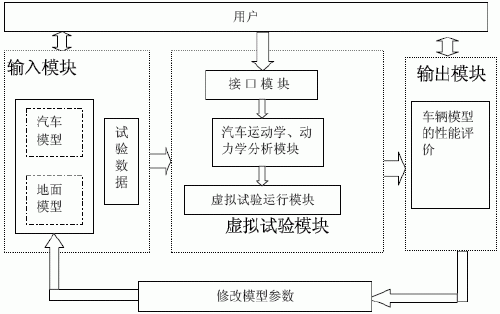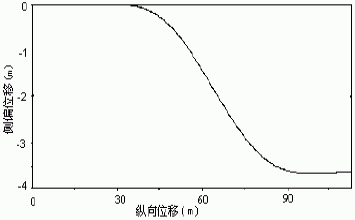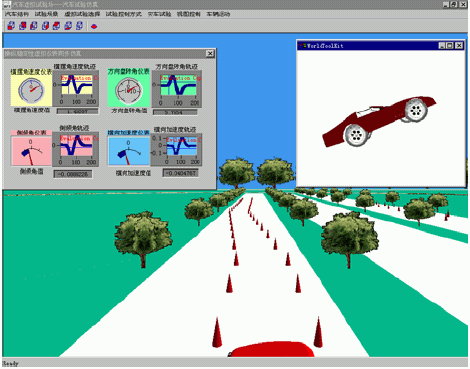Design and Development of Vehicle Performance Test System Based on Virtual Reality Technology
1 Introduction
The emergence of virtual prototyping technology and virtual reality technology has improved the traditional car design and testing methods.
The digital car designed by virtual prototyping technology is combined with the complicated and variable virtual test environment, and the real driver is used to simulate driving, and the visual, listening and tactile effects are applied to the user to make the immersive and interactive feeling. , people - car - environment integration, can directly feel the vibration, tilt, noise and other effects of the car, no danger and damage to collision, tilting and other limit tests, improved the abstract numerical curve simulation, breaking through the difficult The mathematical model expresses the intricacies of driver perception and reaction, and discovers potential problems in the early stage of design, adjusts and corrects them, achieves optimization, and has the advantages of saving money, repeatability, and risk-free.
Typical examples are: Chrysler's new car development cycle has been shortened from 36 months to 24 months, and Ford also announced the development of a fully digital car at the end of 1999. Mercedes-Benz has completed the digital car prototype before 1998 and realized a strong virtual reality technology. It can intuitively and comprehensively simulate, evaluate and improve the overall performance matching and body system layout design of the car in the design stage. .
Therefore, based on the review of a large amount of data, the design of the vehicle virtual test system is carried out, and the maneuverability stability test is taken as an example. The actual test is compared with the virtual test. The virtual test is better than the traditional simulation data processing. The effect, the human-car-environment integration, provides a new approach to the study of vehicle closed-loop systems. The details are described below.
2, system structure design
The vehicle virtual test system is a complex system. It follows the basic principles of advancedness, openness and reliability. Based on the object-oriented design idea, it adopts a hierarchical, modular and standardized design method to keep the system in function. Under the premise of realization, the rationalization of the structure is achieved.
The vehicle virtual test system is mainly composed of three parts: input module, virtual test module and output module, as shown in Figure 1. Introduce the car model into the virtual environment, perform kinematics and dynamic analysis on the car model according to the user's input control commands, and use the analysis data to “virtually reproduce the car test process†in the virtual scene, and the user feels and experiences through various sensors. The performance of the car, the performance evaluation, the model parameters are modified according to the evaluation, the process can be repeated, the car parameters are modified, until the car obtains the best performance. A brief description will be given below.

1. Input module: It mainly provides input of information such as vehicle and ground parameterized model. In this module, the data of real vehicle test can also be input for comparison with virtual test.
2. Virtual test module: mainly consists of dynamic analysis module, interface module and virtual test operation module. The dynamic analysis module mainly calculates the vehicle performance parameters in real time according to the parametric model of the vehicle and the driver's behavior, and provides the virtual test module. Simulation data, virtual test operation module is mainly to provide users with a realistic virtual test environment, to achieve various state changes of the virtual vehicle during the test and feedback this information to the user. The interface module organically integrates the vehicle real-time simulation operation part, the virtual operation environment part, the sensor and other interface devices and the user.
3. Performance evaluation module: In this module, the user comprehensively considers the various sensory experiences of the virtual test under different working conditions, evaluates the performance of the vehicle, and modifies the parameters of the vehicle model according to the evaluation results to optimize the design. This method breaks through the difficulties that the previous evaluation criteria are difficult to establish, the indicators are difficult to determine, and the visualization is poor. In this module, the virtual test can also be compared with the actual vehicle test, and the vehicle model can be corrected according to the difference.
3. Development example of virtual test system
The author developed a virtual experiment of steering stability as an example. Firstly, the digital virtual prototype of the car was built by ADAMS/Car software, and the simulation stability analysis was carried out. The virtual test environment was implemented by WTK (WorldToolKit) and Visual C++, and the virtual instrument part was realized by NI ComponentWorks component. The simulation data of the dynamic analysis is transmitted to the virtual environment to realize the experiment in an image and realistic manner, and the virtual instrument is used to accurately display the change of the data. The human-computer interaction technology enables users not only to have a visual sensory experience, but also to immerse themselves in a virtual test environment through the AGC---Viewer G stereoscopic observation system, and truly experience the performance of the car, thereby evaluating the performance of the car.
The following is an example of a single-shift test in the closed-loop test of the vehicle's steering stability. Using ADAMS/Car, the author established a digital model of a car and designed it according to the single-shift test method (such as trajectory, speed, etc.). Control file, in the vehicle dynamics simulation process, the document controls the vehicle to travel along a prescribed route, and then extracts the main characteristic parameters of the steering stability from the simulation analysis results (such as steering wheel angle, yaw rate, roll angle and The data of the lateral acceleration, etc., with the scene of the single-shift test, dynamically observe the changes of the vehicle itself and the parameters. In order to enable the user to accurately know the specific parameter changes during the car movement process, the function of the virtual instrument is added, and the virtual instrument is used to cooperate with the virtual scene to dynamically display the changes of various parameters of the car during the simulation process. In order to realize the immersion of the scene more realistically, the stereoscopic scene display effect of the dual viewport was developed. Through the AGC--ViewerG stereoscopic observation system, the virtual test scene can be immersed, and the test process is experienced and experienced. Figure 2 shows the results of dynamic simulation analysis (speed is 100km/h), and Figure 3 shows the simulated scene and virtual instrument changes during the virtual single-shift test.

(a) Change in lateral displacement

(b) Changes in steering wheel angle, yaw rate, and lateral acceleration
Fig. 2 Change track of main parameters of single shift line test

Figure 3 Simulation scenario and virtual instrument changes during virtual single-shift line test
4, summary
With the application and development of virtual prototyping and virtual reality technology in the automotive industry, great progress has been made in the design and experimental research of automobiles. The multi-body system dynamics analysis software is used to obtain the vehicle performance parameters, and the virtual vehicle performance test system can fully realize the “indoor virtual testâ€. It is an extension of the future virtual prototype system. By connecting some control devices, it is combined with the virtual scene. The user can feel the vibration, side deviation, roll and other movements of the car, and can add the subjective feelings of the person to evaluate the performance of the vehicle, which has a strong practical significance. With the development of computers, image technology, sensors and other technologies, automotive virtual test technology has a good development prospect.
Rack mount ODF 19"
96 Cores ODF,96 Cores Patch Panel,96 Cores Rack ODF
Ronde Electronic Co., Ltd. , http://www.gdvgacable.com